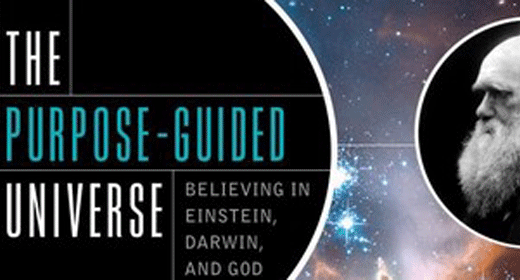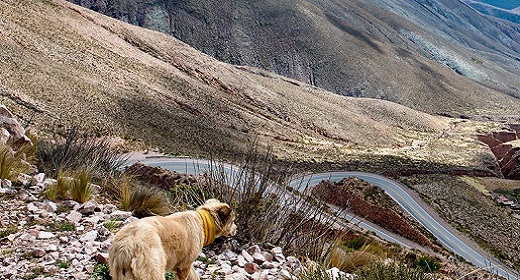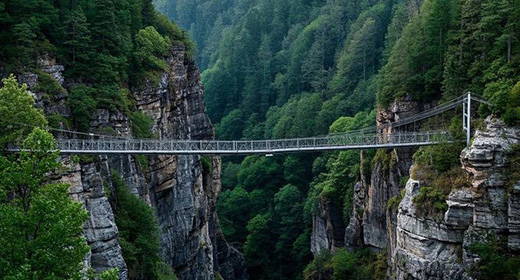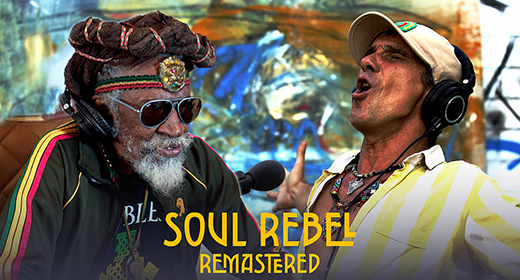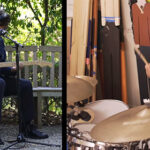by Tom Turcich: In 2015, Tom Turcich set out to circumnavigate the globe by foot. He has been walking ever since…
There are many ways to walk. One may stride or stroll. Or amble, ramble, mosey, or wander—all of which imply a certain leisurely aimlessness when, bestowed with the grand luxuries of time and of money, there is nowhere in particular to be and nothing in particular to do.
Yet there are also more determined, more decisive forms of traveling on foot—hiking, trekking, tramping, and trooping, among them. These convey a sense of purpose or of place, the elements that lend structure and meaning, even if mundane, to the path ahead. One might commute long stretches of concrete, going city block after city block, only to reach an endpoint as ordinary as the office. Or one might traverse, on something like a spiritual pilgrimage, a distance deemed to be iconic, say the height of Mount Everest or the length of the Great Wall. But no matter where one walks, each journey unfolds in fundamentally the same way: one foot after the other, one step at a time.
The steps come easier on some days than on others. One moment might feel like a cake walk or a walk in the park, so to say, or like you’re walking on air, a cloud, or a dream—or any number of the optimistic maxims that have made their way into many a pop song. Other times, walking is nothing to rejoice in; it’s only an arduous trudge.
Tom Turcich, on a mission to circumnavigate the world by foot, has walked all of these ways. Since leaving his home in New Jersey in April 2015, the 32-year-old has rescued a puppy named Lulu in Texas whom he now calls Savannah, been held up at knifepoint in Panama, and halted by life-threatening sickness in Scotland. He has celebrated the nuptials of strangers in Turkey and waited out a global pandemic in Azerbaijan, returning to the U.S. multiple times along the way, for recovery following his illness, for rest, for visas, and for a COVID vaccine. What he once expected to be a continuous five-year journey will be a piecemeal seven-year one. Currently in Kyrgyzstan, with 39 countries and 19,000 miles behind them, Turcich and Savannah still have a few countries and a few thousand miles to go, and they’ll likely return to the U.S. at least once more before they finish in order to avoid winter in Mongolia and being blocked from the border of Australia, which is still closed to travelers. But there’s no question they will finish. That, he assures us.
12/12/16 Day 612. The great thing about walking everyday is that despite being exposed to the elements I have a purpose each and every day; walk. I never fall asleep unsure what I’ll do with tomorrow. I know I’ll learn a little more and grow [a] little more with each new area I pass into.
What could motivate someone to walk the planet’s circumference, to spend years of their life following one circular 25,000-mile route that leads them back to precisely where they first started? Is it the achievement, the glory, the fame? The feeling of challenge, or of conquest? That visceral sensation of discovery that comes only with taking things in with your own five senses? Is it to “soul-search,” “find oneself,” “get over something (or someone),” and “move on”—or however it’s termed in the latest movie depicting a broken protagonist on the hunt to mend themself?
In most everyone’s existence, there comes an experience so profound that it fractures their life into two—the time before and the time after—and at the faultline in between is the moment they decided they would do something. For Turcich, that moment came when he was 17, when his close friend died at age 16. And the thing he decided he would do was see the world—not just on a fleeting, greatest-hits style vacation, but as a sustained lifestyle, with all its ups and downs.
Of course, as a high school student who’d never been away from his family home for more than a few weeks, Turcich wasn’t prepared to set off right away. For one thing, his bank account totaled less than $1,000. And for another, he didn’t have the slightest idea of what “seeing the world” actually meant to him or even how to begin to conceptualize it. So he bided his time. He read widely, scouring travel sites and researching where to go and how to get there. He went to and graduated from university with a degree in philosophy; he worked and lived with his parents while he paid off student loans and saved up money. He considered what makes for a full life, a fulfilled life. His way of traveling, he decided, would be to walk.
Turcich put the word out. He threw a fundraiser and held a press conference, ultimately landing himself a sponsor that agreed to financially back him if he would promote them on his gear, website, and social media accounts. On the day before his 26th birthday, he departed, carrying with him a sleeping bag and tent, a portable cookstove, a Leatherman knife, a battery pack, a few changes of clothing, some food, and some water, packed into a cart that he pushed ahead of him and a bag he strapped onto his back. He hadn’t planned his exact route, only its general trajectory, knowing he wanted to head south toward Uruguay, catch a boat to Antarctica, then hop a flight to Ireland to travel eastward across Central Asia. In order for his trip to qualify as an official circumnavigation, he needed to cover at least 16,300 miles on foot, not counting the air travel in between; cross four continents from coast to coast, going in longitudinally consecutive order; and pass through two spots on opposite sides of the globe. Along the way, he would camp where he could, stay in a hotel where he couldn’t, write, take pictures, meet people, and do what any solitary soul does: ruminate.
It was quiet time on the road—just he and Savannah, the pad of their footsteps, the whir of the traffic, the rustle of the wind, and the exchange of words with the occasional other person they passed by or fellow pedestrian they came across. He documented his daily progress to share online, writing blog posts on his website The World Walk, and posting pictures and videos on his Instagram, Facebook, and YouTube accounts. After an ambitious start—46,169 steps and 22.38 miles on his first day alone—Turcich was slowed by the reality of exhaustion, only able to cover 10 or 15 miles before his legs would give out. He shed pounds, lost toenails. His ankles swelled; his feet blistered. But eventually, he worked his way up to walking about a marathon distance every 24 hours.
On day 34, in Sandbridge Island, Virginia, he upgraded to a new cart, after his old one had weathered broken tires and snapped axles. By day 66, he’d burned through his first pair of shoes. And after 186 days—through Pennsylvania, Maryland, Virginia, the Carolinas, Georgia, Alabama, Mississippi, and Louisiana—he’d made it to his first national border at McAllen, Texas, and he crossed into Reynosa, Mexico. Ten U.S. states down, 44 countries to go..
3/9/17 Day 667. . . . My thoughts nearly ran out in those deserts. I had no more mundane problems to work through, no more bad memories to rehash. My mind was a blank slate and when I stared at the stars I questioned my very existence. “What is man to build his life on?” I would think. He can work until his fingers bleed, construct great statues, and rage against the Gods, but in the end he is still dissolved to nothingness—a grain of salt in the universal ocean. He wants success. He wants fame. He wants to be handsome or beautiful. He wants to live in a penthouse and wants everyone to know it. All those things are means to an end. Man wants them because he believes they will make him happy, but in and of themselves they mean little. Secure enough wealth to live, then direct your efforts towards helping others. To be happy and to make others happy is the end.
No one knows precisely when or why homo sapiens’ evolutionary predecessors underwent the necessary anatomical changes to take us from four legs to two. Some anthropologists point to fossilized footprints from 3 million years ago, others to skulls and skeletons from 4 to 7 million years ago. The theories explaining the shift range from climate change to energy efficiency and, even, to monogamy.
Yet despite its hazy origin story, bipedalism is widely regarded as humankind’s most defining feature. It’s what freed up our hands so that, eventually, we could hunt prey and build shelter; scrawl pictures and jot words; invent tools and then put them to use. “Since the very beginning, walking and being human have coexisted,” wrote historian Joseph A. Amato in On Foot: A History of Walking. “For millions of years, our proximate and distant ancestors moved across history on foot, rendering truth to the notion that we have walked our way to our being.” This was because we had to. Before domesticating horses or inventing the wheel, there was no other means of getting around.
But by the Middle Ages, walking had been thoroughly dismissed as a mode for the masses, a supposed sign of one’s lowliness and limitations. “Except for church processions, court rituals, select pilgrimages, or a singular act of travel,” wrote Amato, “walking carried with it the negative connotation of simply being part of humankind’s perennial attachment to the earth.” So it makes sense, then, that the art of ultra distance walking would emerge as its own category of exceptionalist footing.
In 1589, one Sir Robert Carey walked from London to Berwick—or 300 miles—simply because it was bet that he couldn’t. In the mid-1600s, King Charles II of Scotland completed the earliest documented race-walk, traveling 13 miles from Whitehall to Hampton Court on foot. And in 1762, a man by the name of John Hague undertook the challenge of covering 100 miles in just 24 hours, in what was the world’s first recorded “centurion.” He finished it in 23 hours and 15 minutes. This was followed by a number of competitive long-distance walks in the 19th century, including Captain Robert Barclay’s 1,000 miles in 1,000 hours, which he completed, quite tediously, by going back and forth along a straight-line half-mile course in Newmarket, England. Races like these would set the stage for the Age of Pedestrianism.
From 1860 to 1903, the United States’ most popular sport didn’t involve any balls, bats, or rackets. It was distance walking, and it drew legions of fans and paid out cash prizes bigger than most could ever dream of. In the 1860s, Edward Payson Weston, today’s so-called father of modern pedestrianism, walked his way to fame, first by going from Boston to Washington, D.C., for President Lincoln’s inauguration; and later from Portland, Maine, to Chicago, Illinois, completing 1,326 miles in just 25 days. In 1874, a man named Daniel O’Leary broke the six-day walking record, becoming “champion pedestrian of the world.” The public’s fascination swelled, and the payouts did, too, reaching upwards of $20,000—more than half a million dollars by today’s standards.
It was amid this footing frenzy, as ultra walking enthusiasts sought to stretch the distances ever farther and raise the competition ever higher, that a wild idea was lobbed about. What if someone were to walk the circumference of the entire planet?
Several tried and several failed. Some attempted to dupe their way through it, tricking spectators while raking in the sponsorship money. Others claimed to do it but couldn’t get their achievements independently authenticated. Nearly a century later, a lanky Minnesota man named Dave Kunst became the first verified pedestrian circumnavigator. Setting off with his brother John in 1970, he finished with another brother, Peter, in 1974, after John was shot dead while walking through Afghanistan. Kunst’s world walk is recognized by the Guinness Book of World Records, though not the World Runners Association (WRA), because his 14,500 miles don’t meet the WRA’s minimum requirement. To verify it, he used a scroll stamped by the mayor of each town along his journey; today, authentication generally relies upon GPS data, videos, and photographs.
Since Kunst, at least 10 others have successfully followed in his footsteps, albeit on different routes. Polly Letofsky, of the United States, became the first woman to walk around the world in 2004, eight years after Ffyona Campbell admitted she’d cheated. Jesper Olsen, Rosie Swale Pope, Tom Denniss, Tony Mangan, Serge Girard, and Robert Garside all ran their way around it. Other circumnavigators include Vishnudas Chapke, from India, and Steven Newman and Angela Maxwell, both Americans. British ex-paratrooper Karl Bushby, who set off from Chile in 1998 on a trek known as the Goliath Expedition, aiming to be the first person to walk an unbroken path around the world, hasn’t completed his journey yet, but Turcich credits him as his greatest inspiration. Combining Bushby’s route with Kunst’s, Turcich created the one he’s more or less following now.
Like the world walkers he admires, Turcich has attracted his own fan base. Upon reaching Europe in 2017, he launched a Patreon account to raise funds in exchange for perks, like exclusive content and postcards. He’s hosted four Ask Me Anything sessions on Reddit. Today, his Facebook page for The World Walk has more than 14,000 followers, while his Instagram account has nearly 75,000. Savannah, whom Turcich claims will be the first dog to circumnavigate the globe, has 9,202 Instagram followers and counting.
3/18/18 Through my two years of walking I’ve been taken in by friends, family, and complete strangers. In a new city or on a tough road there’s nothing better. You not only get a warm bed and shower, but are given a peek into another life. I’ve woken to mountain views, to pigs oinking, to life in big cities, and in each I imagined I were on a different path, living with different circumstances, and how altered a person I’d be living there. It’s like . . . sampling flavors and learning what I like about each. More importantly, with each new family that brings me in, my desire to give back grows. I fantasize about the day I can open my own doors to all these good people.
For Turcich, some days are the push-on days, with climes so abrasive and landscapes so uninspiring that in his mind, all there is for him to do is put in his earbuds and listen to a This American Life podcast or an electronic music playlist. To power through. Other days, he feels different. On those days, intrigued or charmed or cloaked in comfort, he finds himself wondering if he might allow himself to linger where he is. Sometimes, he does, as when he paused for a few weeks at Lake Atitlan to learn Spanish or met up with friends for breaks in Bogota and Lima. In Uruguay, he hunkered down with extended family, as he did in Ireland, Croatia, and Copenhagen, where he fantasized about spending summers in Denmark. Occasionally, he’s been so struck by a locale’s beauty and kindness, he’s imagined what it would be like to buy a home there—in Guatemala, Peru, and Italy.
Over the 1,530 days he’s walked thus far, Turcich has thought a lot about where he’ll end up in the world. Surprisingly, or maybe not, he says he’d like to someday settle in his home state of New Jersey. But every place he’s passed through—with names like Daisy, Tostado, and Split—has taught him something special. He’s learned how to read the weather, and appreciate it when it’s nice. How to take a better photo, and write a moving essay. He’s learned to take days off. But out of all the lessons he’s learned, perhaps the most basic—the most important—is that good people really are everywhere.
What is traveling the planet if not meeting and greeting all the life that inhabits it? Brushing shoulders with, and bidding best wishes to, some of the many billions of beings who make their home, just as you and I do, in this most precious of space? On his own walk, Turcich has witnessed many others—the walks of life of all the people he’s crossed paths with. The shop owners and street vendors who sell him sustenance; the bar owner who opened her establishment just so he could watch a Philadelphia Eagles football game on TV. The people who put him up for a night; the rancheros, farmers, and construction workers he passes on the road. Mathematicians, birders, teachers. A husband scattering his wife’s ashes.
But the fact is that Turcich is not like a majority of the people he meets, and as a white man with one of the most powerful citizenships in the world, he never will be. He acknowledges this privilege. What would it be like to walk around the world as a Black man? A brown woman? To try to do everything Turcich has done—go through police checkpoints, cross international borders, bribe immigration and customs officials, set up camp on the private property of strangers, sleep in parks and schoolyards and cemeteries—as a person with less privilege?
Turcich can’t know. No one can truly know what it’s like to walk in another’s shoes, dragging their steps one day and going footloose and fancy free the next, the roadblocks they come up against, or the detours they go down. There are so many ways to walk. Tom Turcich’s walk around the world is only one of them.






